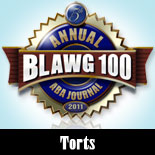
Time was, when I started law school back in the 1990’s, the new law students bonded over the books they’d just read about life in law school. (A communal fear of impending doom also brought us together.). Most students had read Scott Turow’s One L, and a few had managed to locate a tattered paperback of John Jay Osborn’s The Paper Chase. Years later, when asked by prospective law students, I would recommend that they also read Vincent Bugliosi’s Helter Skelter and Bob Woodward’s The Brethren: Inside the Supreme Court (to help them to better visualize the criminal justice system and the inner workings of the U.S. Supreme Court, respectively). Because I’m me, I’d also throw in a wild card suggestion, and often, it was Cannibalism and the Common Law, The Story of the Tragic Last Voyage of the Mignonette and the Strange Legal Proceedings to Which It Gave Rise, by A. W. Brian Simpson (who elected to write about the famed 1884 case of Her Majesty The Queen v. Tom Dudley and Edwin Stephens, which some of you may remember from law school). Whatever the case, I’m not sure if anyone ever followed any of those suggestions.
None of those books, really, explained the nature of the practice of law. In our system, law students do not learn much about the practice of law itself; rather, they learn how to think like lawyers. We here at Abnormal Use have often written about the benefits of a practical legal education (see here, here, and here for some examples). However, with an exception or two, few institutions teach the practical components of the practice of law. Even fewer address the challenges of the business of law, the maintenance of client relationships, and the development of a book of business. Thus, it is generally left to the law firms, and somewhat, to the local bar associations, to inculcate such things. These days, many law school graduates find themselves without gainful employment, and thus, they may have little or no access to mentors who can teach them the lessons we all need to know as lawyers building a practice.
Alabama lawyer Keith Lee, the founder of the Associate’s Mind blog, addresses these issues in his new book, The Marble and the Sculptor: From Law School to Law Practice, published late last year by the American Bar Association. The title was inspired by an Alexis Carrel quotation (“Man cannot remake himself without suffering, for he is both the marble and the sculptor.”), and in the book, Lee offers his thoughts on how law school graduates can remake themselves into successful lawyers. That’s no small feat. Specifically, as the book’s back cover informs us, Lee seeks to answer these questions:
How do I transition from law school to law practice?
How do I get a job?
How can I find like-minded mentors and colleagues?
How do I develop a book of business?
How do I become a good lawyer?
These, of course, are big questions (and put another way, existential issues for a new lawyer). In confronting them, Lee starts with advice for aspiring law students: “Before you go to law school, go work in a law firm for six months.” This is advice that Lee himself took to heart. He came to law school at age 27 after having worked at a law firm, and thus, likely had a very different perspective than a recent college graduate. As Lee tells it in the book, he treated law school as an occupation in and of itself, taking advantage of every opportunity to learn the law and develop future contacts and referral sources. That’s an approach that would serve law students well (if they are so advised).
The book itself is a series of relatively short chapters containing general advice, tips to avoid legal mistakes, rules for client service, networking strategies, and anecdotes from seasoned practitioners. Our favorite bit of advice: “Always walk into another lawyer’s office with a legal pad and pen.” At its essence, the book is a collection of suggestions on how to become a successful lawyer with a book of business and the transformation required in such a task. A young lawyer cannot become a success, Lee posits, by merely being a “worker bee.” In making this analogy, he even quotes Quentin Tarantino’s Kill Bill, Volume II in encouraging readers to become an indispensable “renegade killer bee.” That’s the real trick, though, isn’t it? To be the type of practicing attorney that is successful both in skills but in business development, one must be, for lack of a better phrase, “all in.” Lee’s tips are best described as “how to be all in.” To be honest, this book may be as helpful to a senior associate soon to become a junior partner as it is to a new lawyer, which says a lot about the ambition and wisdom of Lee, who himself is a young lawyer not yet a partner himself.
In sum, Lee’s book is one we would recommend both to the aspiring law student, the new associate, but also the more seasoned young lawyer looking to broaden his or her practices areas and develop new business. Not every bit of advice will be of benefit to every reader, but many of them will, and nearly all of them will prompt the sort of thinking and self-analysis which any lawyer – young or old – must undergo to keep sharp.
As a part of this review, Keith Lee was also kind enough to agree to a brief email interview with Abnormal Use.
1. How would you describe the “gap” that a law school graduate must bridge between graduation and employment? How should that gap best be addressed, and by whom?
The most recent ABA job data came out a couple weeks ago. Fifty-seven percent of 2013 graduates were employed in full-time, long-term legal jobs. Exclude jobs funded by law schools from this figure and it’s 55.3 percent. If you’re a recent law school graduate you’ve got about a 50/50 shot of getting a job. So I think I would describe that “gap” as a gaping maw.
The people in the top 10 percent of their class are likely always going to be able to get jobs. But any other recent law school graduate that wants to come out on the right side of that coin flip needs to focus on differentiating themselves from their classmates. Try to become as “practice-ready” as possible. Trial ad, practice management, et cetera. Focus on skill sets they possess outside of law. Work on growing their network of personal relationships. Look into ways you could begin working on business development on day one of the job. Law schools could help by letting the third year be more focused on these types of skills but instead people get “Harry Potter and The Law” or some other similarly useless elective. And even though law schools should be doing a better job of preparing their graduates, ultimately, it is the personal responsibility of every graduate to take their future and career into their own hands. No one else is going to do it for you.
2. What role, if any, should the law schools play in teaching trial advocacy and practice management? In light of the size of most graduates’ student loans, are the law schools doing graduates a disservice by not better addressing these topics?
A much larger one. Although as currently structured, I think most law schools would likely do a poor job of it. Law schools would need professors who have actually practiced – like in this century – to come in and teach these classes to give them legitimacy. Maybe not so much for trial advocacy, but definitely for practice management. I’m in favor of more adjunct professors who are active practitioners. It would result in lower costs (less six figure professor pay) and more real world instruction for students. I think law schools want to do what is best for their students, but they are slow moving institutions. They’ve been able to coast on the same model for decades while the rest of the world changed. Now they are being called out on it. Which is resulting in defensiveness (“We’ve always done things this way! No need to change!”) and scrambling for solutions. There is no easy fix, unfortunately.
3. What would you say to the young lawyers who didn’t have an opportunity to read your book before going to law school and beginning their careers in the legal field?
Never stop learning or growing. The vast majority of successful lawyers I know place a large emphasis on having a mindset of continual improvement. There is never going to be a time that you can rest on your laurels and coast. You need fierce determination and a high work ethic if you want to succeed.
4. You emphasize in the book that law students, and young lawyers, must be willing to work hard and sacrifice more than they might have imagined to develop themselves and secure a position with a firm. That is certainly true. That said, what do you suggest young lawyers do to stay sane and keep perspective?
You have to have some life outside of work. Try and make the time to do something fun on the weekends. Sure there are times you’ll be at the office on the weekends, but not every weekend. Also, some sort of physical activity/exercise. Something that engages your body and mind and forces you to not think about work for 45 minutes is invaluable. I’ll also defer to Foonberg’s Rule (Jay Foonberg, author of How To Start & Build A Law Practice): “Clients come and clients go, family is forever.”Make time for them.
5. You cast some scorn on social media in the book, but you also mention the benefits of networking and business development. How do you believe young lawyers can use social media and blogging to their advantage? Should they do so?
Obviously, I’m quite active online – and I enjoy it. But it’s not the end-all, be-all of practice. Social media is not some foundational keystone of being a lawyer that you have to be involved with to be successful. There are plenty of successful attorneys who do absolutely nothing online. That being said, used carefully, social media can help generate and accelerate relationships. It can also help young lawyers raise their profile quickly. But they have to do so ethically. The other issue for young lawyers is that they have to have their firm be on board with their online activities, which can be a tough sell.
6. What is the best business development advice you have ever received?
Be friends with everyone, i.e. expand your network of relationships to as many people as possible. As you grow your network, opportunities grow as well.
7. To your knowledge, has the book dissuaded anyone from attending law school? If so, what happened?
Not that I know of! But if it has, I would be pleased. If they can be dissuaded by a book, they probably didn’t want to go to law school for the right reasons. And I’ve actually heard from a number of new lawyers who found the book encouraging.
BONUS QUESTIONS:
Why do you dislike the term “blawg”?
Just look at it! “Blawg.” It’s an ugly looking word! Besides, blogs are just called blogs. There are mommy blogs, tech blogs, food blogs, etc. None of them have felt the need to create a new term for themselves. Blawg was cute for roughly 10 seconds the first time I saw it. Now I cringe when I see it.
What is your favorite depiction of a law firm in popular culture, and why?
“Suits.” Just for how over-the-top ridiculous it is. And how little it has to do with how firms actually work – yet people ask all the time if that is what firms are like.
What has been the most rewarding component of your blogging experience?
Building relationships with lawyers across the country. It’s taken a long time (years) but I’ve come to know dozens of lawyers across the country well. It’s helped broaden my experience of what it means to be an attorney and learn about how others conduct their practice.
What happens to Associate’s Mind when you make partner?
Not sure! At some point Associate’s Mind will have to change. I’ll be too distant from what it means to be a “new lawyer.” I’ll have to leave that perspective to someone better suited. I’ll write about what ever interests me at that point.
You have previously said that you were online back in the 1980’s as a BBS user. What do you miss about the BBS days and the Internet’s infancy?
British writer Arthur C. Clarke once remarked “Any sufficiently advanced technology is indistinguishable from magic.” When I was first getting online in the late 80s as a kid, it was pure magic. The net wasn’t all-encompassing and omnipresent. The pop, hiss, and crackle of dialing into a BBS – it was a physical thing. Being able to type in commands & get a response was exciting and new. It was like being in a William Gibson novel. I miss that feeling sometimes.
By the way, the image depicted at the top of this post is not the actual cover of The Marble and the Sculptor: From Law School to Law Practice. Rather, just as he did with Kevin Underhill’s The Emergency Sasquatch Ordinance, Abnormal Use blogger Batten Farrar carefully recreated the cover for the purposes of this book review. By the way, we are certainly not the first ones to interview Keith Lee. Last year, Ernie Svenson of Blogging for Lawyers interviewed him in a piece entitled “5 Questions for law blogger Keith Lee of AssociatesMind.com.” Check that out. (Coincidence alert: You may recall that we here at Abnormal Use once interviewed Ernie Svenson back in July of 2011. To read that interview, see here.).





















